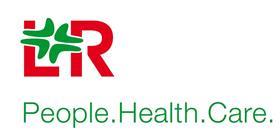Rachael Sykes on the need for proper lower limb ulceration management and the implementation of a three-step transformation plan to revolutionise care delivery
Lower limb ulceration is a common cause of suffering in patients and its management poses a significant burden on the NHS. Venous leg ulcers are the most common hard-to-heal wound in the UK and it is estimated that over one million people in the UK have a lower limb ulceration annually1. The cost of managing patients with lower limb ulceration is over £3bn each year, this is more than double the spend of any other wound type1. Much of this burden currently sits with the community and primary care nursing workforce, with up to 50 per cent of community nursing workload being taken up by chronic wound management2.
Sponsored by
Despite the evidence available on best practice in lower limb ulceration treatment, there are significant variations in clinical practice. Such variations have been highlighted by NHS England’s “Betty’s Story” under the “Leading Change, Adding Value” framework3, which provided detailed evidence on unnecessary spend, multiple visits to healthcare providers, elongated healing times, and impact on patients’ quality of life. National initiatives, such as the Legs Matter campaign (Legs Matter, 2018) and National Wound Care Strategy Programme (The AHSN Network, 2018), set aims to increase overall awareness and improve patient care by reducing unwarranted variation. It is vital that health services move towards the elimination of unwanted variations on leg ulcer management.
In partnership with L&R, South West Yorkshire Partnership Trust, implemented a three-step transformation plan for lower limb ulceration management to revolutionise the way care is delivered across the organisation. This consisted of implementing the Best Practice Leg Ulcer Pathway (Atkin & Tickle 2019), a self-care delivery model to facilitate self-care and a comprehensive education and coaching programme for clinicians and patients to embed sustainable practice. An independent audit of 95 patients was conducted4.
Extrapolating the results to a 100,000 patient population, SWYPT achieved the following savings:
- £903,500 reduction in total treatment costs
- £226,000 reduction in product costs
- 11,600 nursing hours released back to care, which is equivalent to six nurses in full-time employment
Along with this, 72 per cent of wounds healed by week 18 and 99 per cent of wounds healed by week 42.
In addition to the above, improvements to staff wellbeing and sustainability outcomes were observed, making a positive change in both areas.
On 24 March 2022, the HSJ Partnership Awards awarded the Most Effective Contribution to Clinical Redesign to L&R and SWYPT for reducing the burden of wounds through workforce optimisation.
The judges felt that “the project achieved impressive results with regards to the impact on workforce utilisation and patient empowerment while ensuring high standards of clinical outcomes. There is considerable potential for the approach to be rolled out rapidly and at scale across the country which is likely to result in significant savings of care hours needed as well as cost, while allowing patients to have more flexibility with regards to their care”.
L&R are working with a number of trusts across the UK to implement and replicate these results. Interested in finding out how L&R can transform outcomes in your organisation? Visit here.
References
1. Guest et al, Burden of Wounds 2020 Guest JF, Fuller GW, Vowden P. Cohort study evaluating the burden of wounds to the UK’s National Health Service in 2017/2018: update from 2012/2013. BMJ Open 2020; 10(12)
2. RCN District and Community Nursing (DCN) Forum - Sarah Hayes, Wendy Newnham, Sue Hill, Irene Zeller, Marysia Graffin and Gail Goddard - DCN Staff Survey, December 2020
3. NHS RightCare scenario: The variation between sub-optimal and optimal pathways, January 2017 https://www.england.nhs.uk/rightcare/wp-content/uploads/sites/40/2017/01/nhs-rightcare-bettys-story-narrative-full.pdf
4. Hallas–Hoyes L, Williamson S, Kerr A, Andrews T, Calladine L. An advanced self-care delivery model for leg ulcer management: a service evaluation, JWC Vol 30. N9 (2021)




























